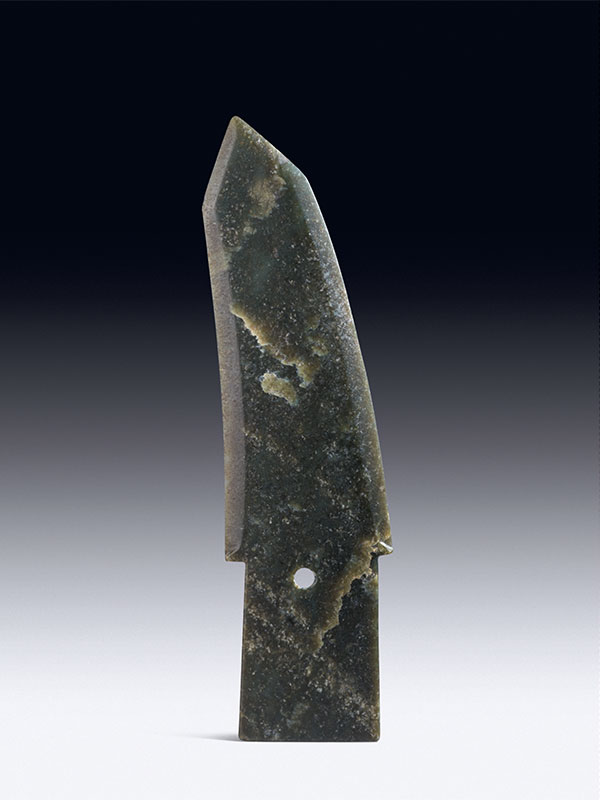Jade ritual blade, ge
China, late Neolithic period or early Shang dynasty, c. 1500 BC
A jade ceremonial blade in the form of a knife, with a sharply pointed end, a squared-off tang and bevelled edges to top and bottom. A single hole, drilled from both sides, is situated near the tang. The uniform, dark green stone has lighter-coloured veins. The stone has an even, soft polish all-over.
Prior to the Shang dynasty, jade implements took their shape mainly from stone examples, but the shape of this ceremonial blade takes that of a bronze knife of a type first made around this time.1 A jade blade from the very last stage of the Neolithic period, the Erlitou phase (c. 2000 – c. 1600 BC) which has closely similar features to the present ge, such as a sharp point, bevelled edges, a single hole drilled from both sides and a plain tang, is illustrated by Rawson.2 The ge is a symbol of bravery and strong national fighting force.
- New Archaeological Discoveries in China, Beijing 2005, no. 64, p. 105
- Rawson, J. Chinese Jade – From the Neolithic to the Qing, London 1995, fig. 2, p. 192

